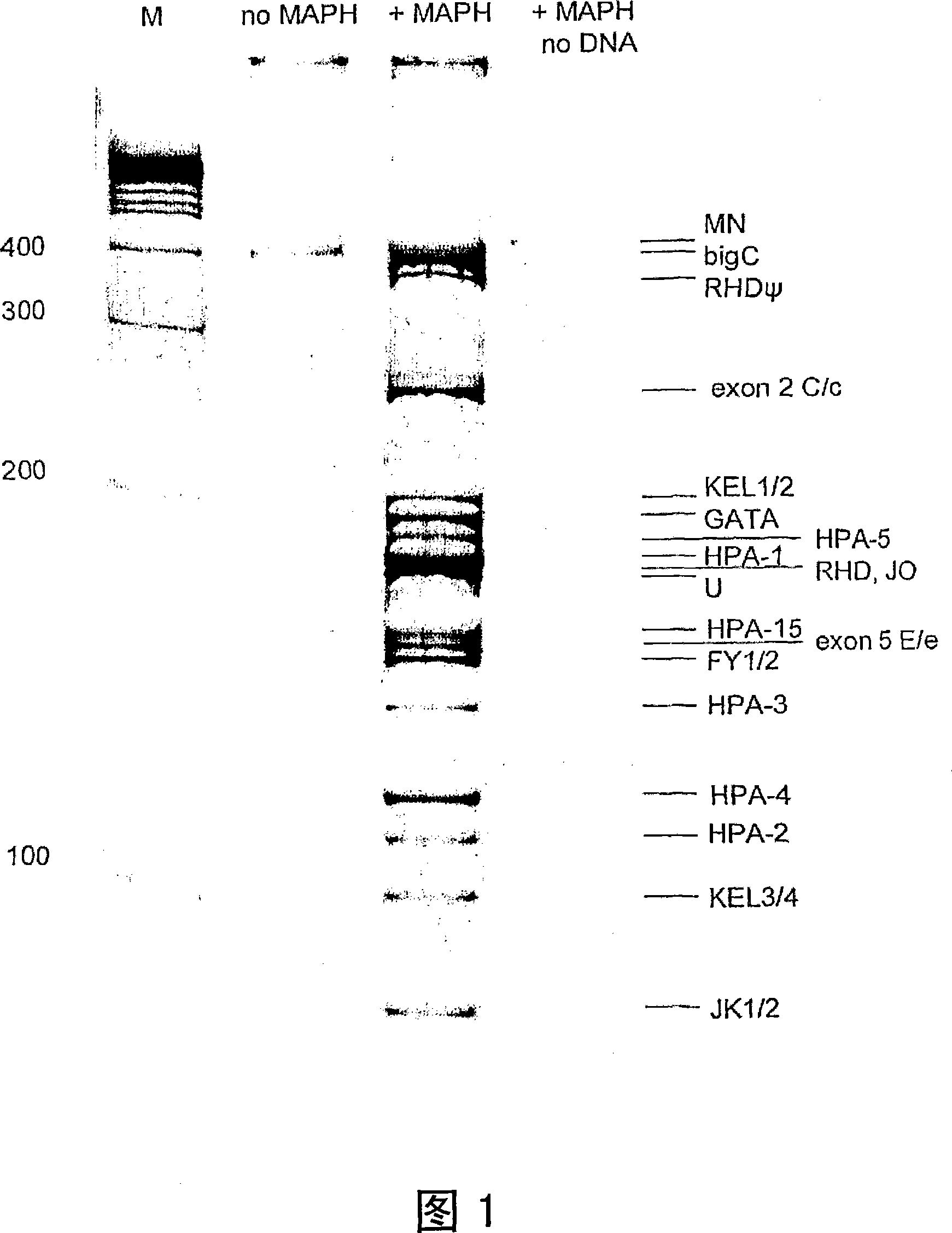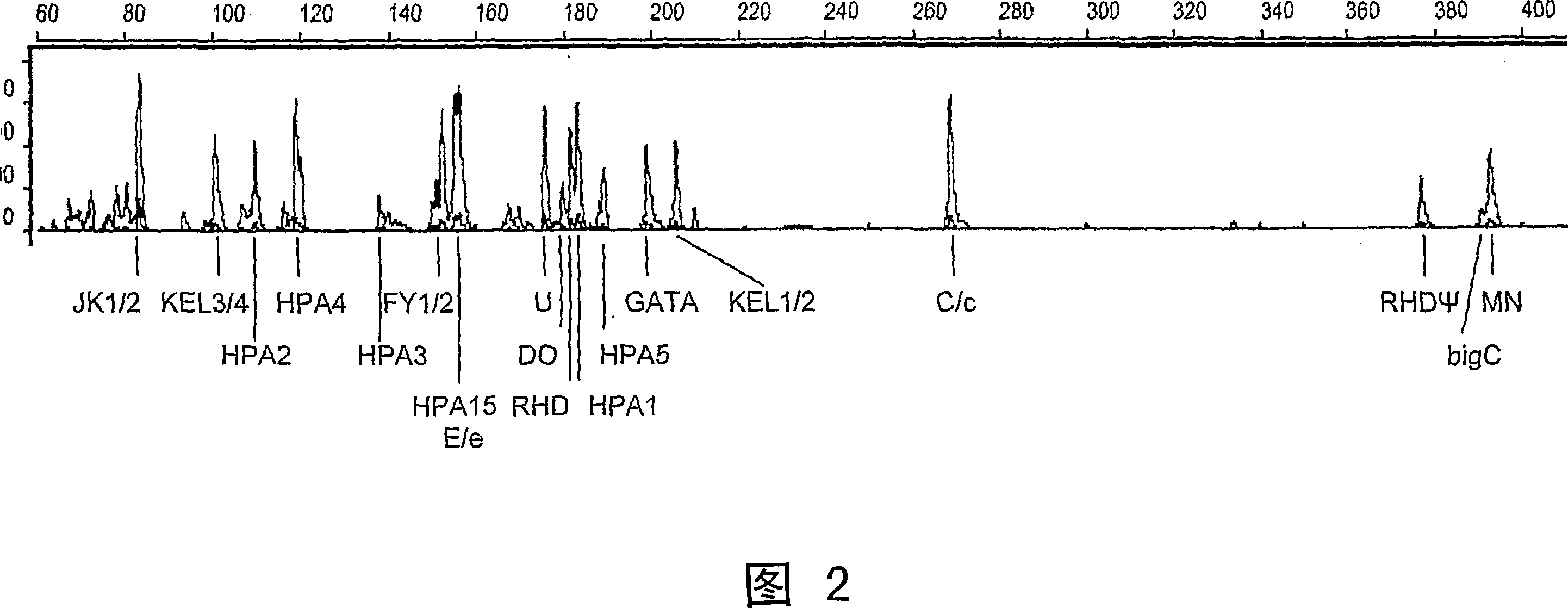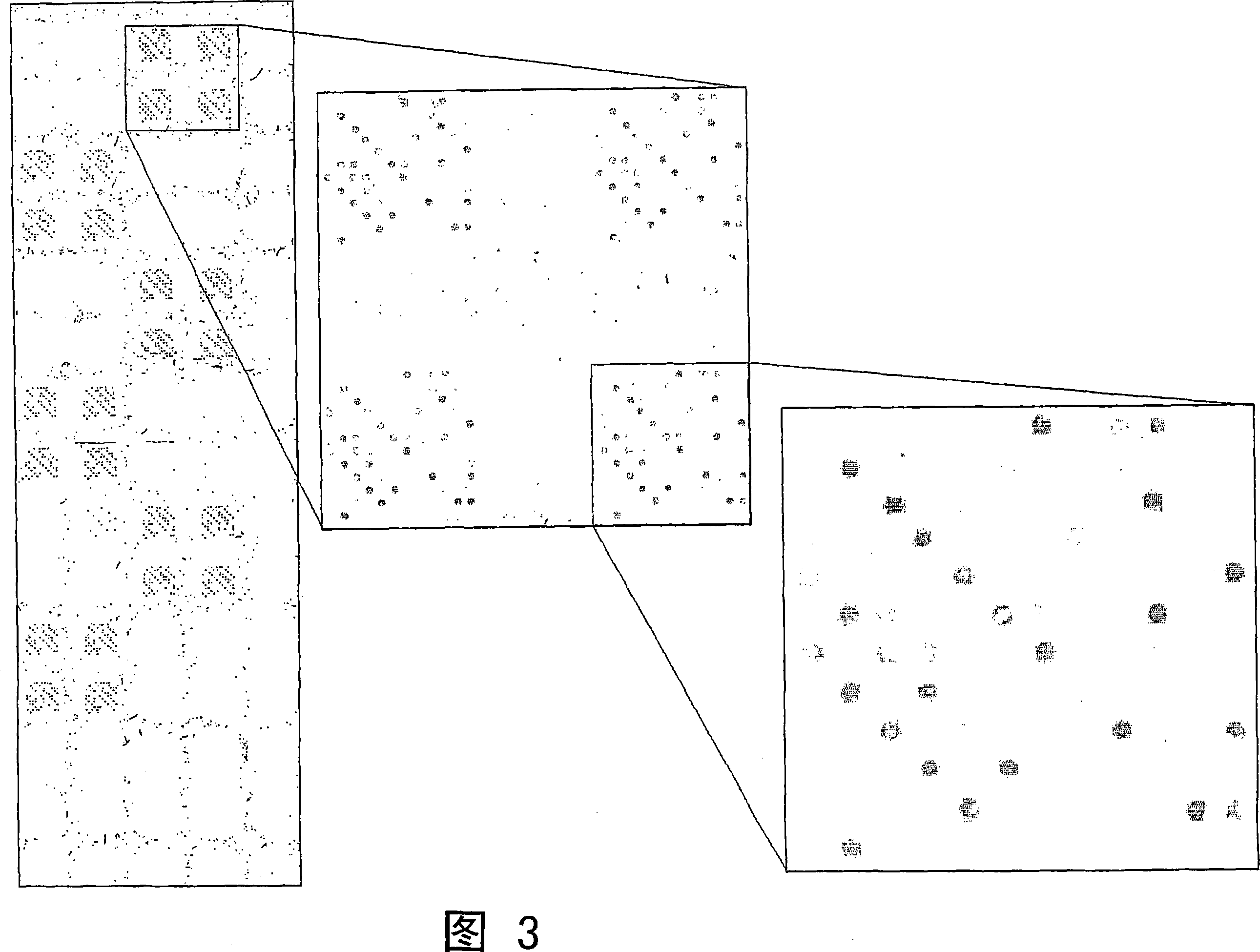A method of genotyping blood cell antigens and kit suitable for genotyping blood cell antigens
An antigen gene, blood cell technology, applied in the direction of biochemical equipment and methods, microbial determination/inspection, etc., can solve the problem that the feasibility of DNA microarrays, the characteristics of oligonucleotide probes and microarray formats are not disclosed, Issues such as practical, rapid and reliable methods for analyzing blood cell antigen genotyping are not published
- Summary
- Abstract
- Description
- Claims
- Application Information
AI Technical Summary
Problems solved by technology
Method used
Image
Examples
Embodiment 1
[0796] Table 1 shows the sequences and Tm values of the probes spotted on polylysine-coated slides. The SNPs of HPA-3 and 5 were located in GC-rich and GC-poor regions, respectively. Therefore, these probes are shorter or longer than other oligonucleotides and have Tm values outside 60-65°C. Omnigrid 100 with 16SMP 3 micro-spotting needle (Telechem) was used _ Microarray instrument (Genemachines), will be dissolved in 0.4M NaHCO 3 Probes were spotted at a concentration of 50 [mu]M in (pH 9.4) on poly-L-lysine-coated slides. Each slide contained 48 fields of 134 spots each, corresponding to 128 allele-specific probes, 5 background controls, and positive control CS05. Similar probes are spotted on spots as far apart as possible from each other. by 250mJ / cm 2 (Stratalinkermodel 1800 UV Illuminator, Stratagene) UV irradiation was performed to cross-link DNA. To prevent non-specific hybridization, slides were mixed with 100 μl of prehybridization solution [400ng / μl yeast ...
Embodiment 2
[0799]Primer mixes were constructed with the primers listed in Table 2. Primer concentrations in the PCR mix are also listed in Table 2. Multiplex PCR was performed using the Qiagen multiplex kit. In multiplex PCR, the annealing temperature was not changed during the PCR, and two fluorescently labeled universal primers were used. More specifically, at the beginning, the PCR mix contained a very small amount of chimeric primers (5 nM) and an excess of fluorescently labeled universal primers (0.2 μM of each universal primer per chimeric primer). In terms of temperature, PCR started at 95°C for 15 min, followed by 45 cycles of 94°C for 30 s, 57°C for 90 s, 72°C for 90 s, and the protocol ended with a final polymerization step at 72°C for 10 min. In the first few cycles, very little PCR product was amplified, but as seen by 8% acrylamide gel electrophoresis in Figure 1, it was sufficient to serve as a template for the universal MAPH primer in subsequent cycles. By labeling the ...
PUM
 Login to View More
Login to View More Abstract
Description
Claims
Application Information
 Login to View More
Login to View More - Generate Ideas
- Intellectual Property
- Life Sciences
- Materials
- Tech Scout
- Unparalleled Data Quality
- Higher Quality Content
- 60% Fewer Hallucinations
Browse by: Latest US Patents, China's latest patents, Technical Efficacy Thesaurus, Application Domain, Technology Topic, Popular Technical Reports.
© 2025 PatSnap. All rights reserved.Legal|Privacy policy|Modern Slavery Act Transparency Statement|Sitemap|About US| Contact US: help@patsnap.com



